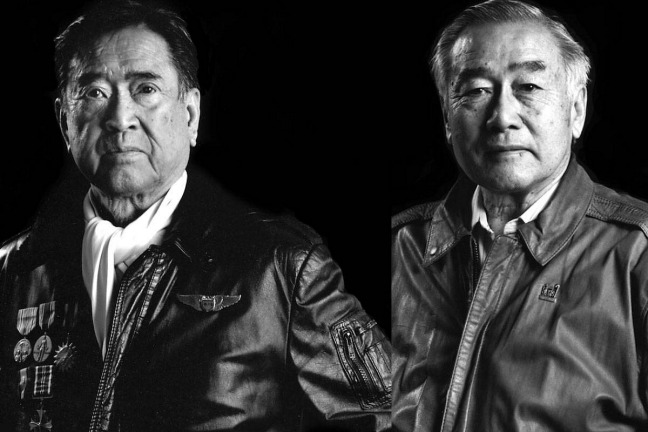War was not so distant in Prince Rupert after
the Japanese bombed Pearl Harbour in 1941. The North Coast fishing village
transformed into a strategic military base. The population of the city
tripled, from approximately 7,000 to 21,000 people. Reminders from that
time are reflected in the wartime homes built across the city and some
military structures, such as the Barrett Fort on southern Kaien Island.
But there are memories of war heroes that exist beyond
Kaien Island. Heather Mah and Cheryll Watson remember their
fathers as great bush pilots who were raised in Prince Rupert and went
on to become World War II aviation legends in their own right. Both women
spoke to the Northern View to share what their fathers’ roles were in the
war, and how Prince Rupert always held a special place in their heart.
“He (Cedric) did 337 flights over the Himalayas — ‘The
Hump’ — and my dad (Albert) did 420. They broke some kind of a record flying
non-pressurized planes,” Heather said over the phone from her home in Montreal.
The Hump was the only way to get supplies to China after the Japanese took
control over sections of the country and Manchuria. Both Albert and Cedric
flew supplies for Pan American Airways, a subsidiary of China
National Aviation Corporation. The treacherous route, known as The
Hump, was known for poor visibility, turbulence, harsh winds and it wasn’t
uncommon for planes to ice up.
Wartime pilots assisting the American mission in China
were known as Flying Tigers. The Mah brothers were as fierce and
determined as the moniker. Their bravery came from a shared mission to
help their ancestral territory where much of their family lived during
both the Japanese invasion and the civil war between the Chinese Nationalist
and Communist forces. Albert died in 2005 at age 84, and Cedric died in
2011 at age 88. Their aviation accomplishments and misadventures have been
well documented, but what is less known are the anecdotes from their daughters.
“When my father was little, he would get up to some mischief.
When he was as young as 10-12 he would run off the top of the garage with
an umbrella to try to fly. That’s what my auntie told me,” Heather said,
before sharing another story about stealing her grandfather’s ice cream
truck and enjoying hot dogs and french fries during a brief stint behind
bars.
From China to the Hump
The Mah family moved to Canada in the late 1800s. Mah
Bon Quen and his wife had one son, Mah Chung Kee, who moved
to Prince Rupert in 1912 and started up the Sunrise Grocery Store. Mah
Chung Kee had nine children, two of which were Albert and Cedric.
When their grandfather died in 1936, the family went back to China to bring
his body to his ancestral village. Some of the family stayed, but a teenage
Albert and Cedric went back to Prince Rupert to finish their schooling.
“Father and Cedric came back to Canada and at a very young age, they both
got interested in aviation. My father started flying at age 16,” Heather
said.
The brothers went to California to learn how to fly. They
returned to Canada, and worked at the Air Observers School in Edmonton,
and later Albert went to work for Quebec Airways. “By 1943 the war
had broke out and his family, sisters and his mother, were still in the
village in China,” Heather said. Eager to serve in the war and be closer
to their family, they wanted to fly but the Royal Canadian Air Force
had a discriminatory policy at the time that wouldn’t allow ethnic Chinese
to fly with them. Instead, they signed up with Pan American Airways
and flew missions over The Hump in the Himalayas.
“This was really dangerous work. They were flying through
the Himalayas. There were Japanese in the air. No pressurized cabins, they
used oxygen masks and had trouble with icing up,” Heather said.
Legends
There are documented stories of the brothers taking part
in dangerous missions. Albert once pretended to be deaf and mute to sneak
past enemy lines in China in order to smuggle his 12-year-old sister from
Fei Gno, the family village where many had returned after their grandfather
passed away. They hid in a coffin on a river boat to avoid the guards,
while Japanese planes bombed from above.
Near the end of the war, Cedric was flying in a Douglas
DC-3 carrying millions in Chinese currency. When his plane iced up, an
engine failed and he was forced to toss most of the bundles of money over
to lighten the load. They landed safely, and were thoroughly investigated.
In 1945, the Japanese surrendered, but the civil war in
China erupted. The brothers continued to supply the nationalists until
1949 when Chiang Kai-Shek’s Nationalist Chinese Army was defeated by the
Mao Zedong’s Communist forces. For their efforts, Albert and Cedric were
both awarded the Distinguished Flying Cross and Air Medal by the U.S. Air
Force in the 1990s.
After the war
Cedric worked as a bush pilot based in Prince Rupert
for a few years. His daughter, Cheryll, was 15 years old at the time. “He
had a great gig out there. He did a lot of work for some lumber companies.
My dad would have to fly people in from the lumber companies in to check
out the inventory,” she said. “Definitely some very sophisticated navigational
flying skills were required.”
Cheryll and her brother went to visit their father twice.
She remembers how the community supported him, and helped out the single
dad. Sometimes, he even took his kids on flights. “It was amazing to watch
him maneuver the plane in between the mountains,” Cheryll said.
Then they moved back to Edmonton, where Cedric continued
to fly as a bush pilot in the Arctic, where he also crashed and survived.
Albert moved to Montreal, where he met Heather’s mother, but he still made
trips to Prince Rupert for reunions. In 2005, he purchased a plane ticket
to the North Coast for another reunion, but he passed away before he could
use it. Heather inherited the ticket and travelled to Prince Rupert for
the first time.
She reunited with her relatives. The Mah family is well
established in Prince Rupert, including her cousin, Pat Mah, who runs Baker
Boy on Third Avenue. She also met up with her dad’s best friend’s daughter,
Donna Morse-Smith, who came to visit Heather in Montreal this past summer.
It was Albert’s connection over the years to family and Ingver Leon Morse
that Heather said helped form a stronger bond with Prince Rupert and her
cousins.
Determined to fly, the Mah brothers, Flying Tigers, are
just two of the legends who emerged from Prince Rupert who can be remembered
on the 100th anniversary of Armistice Day this November 11.
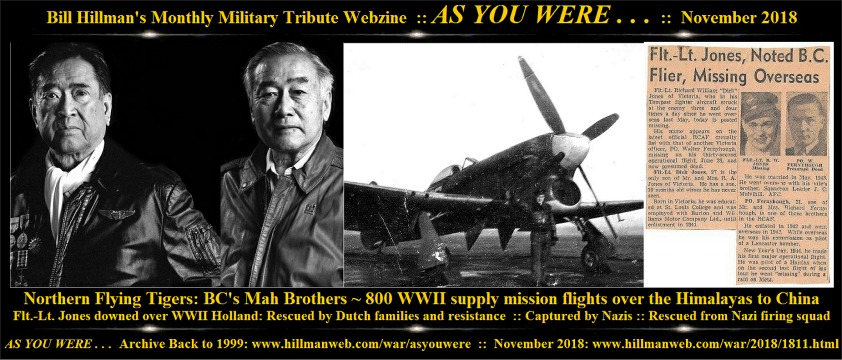
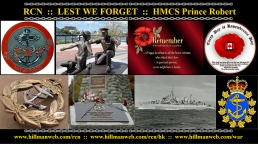 .
.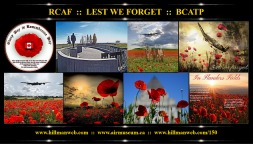 .
.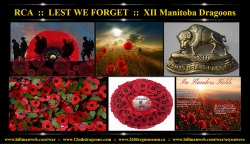

![]()

![]()












